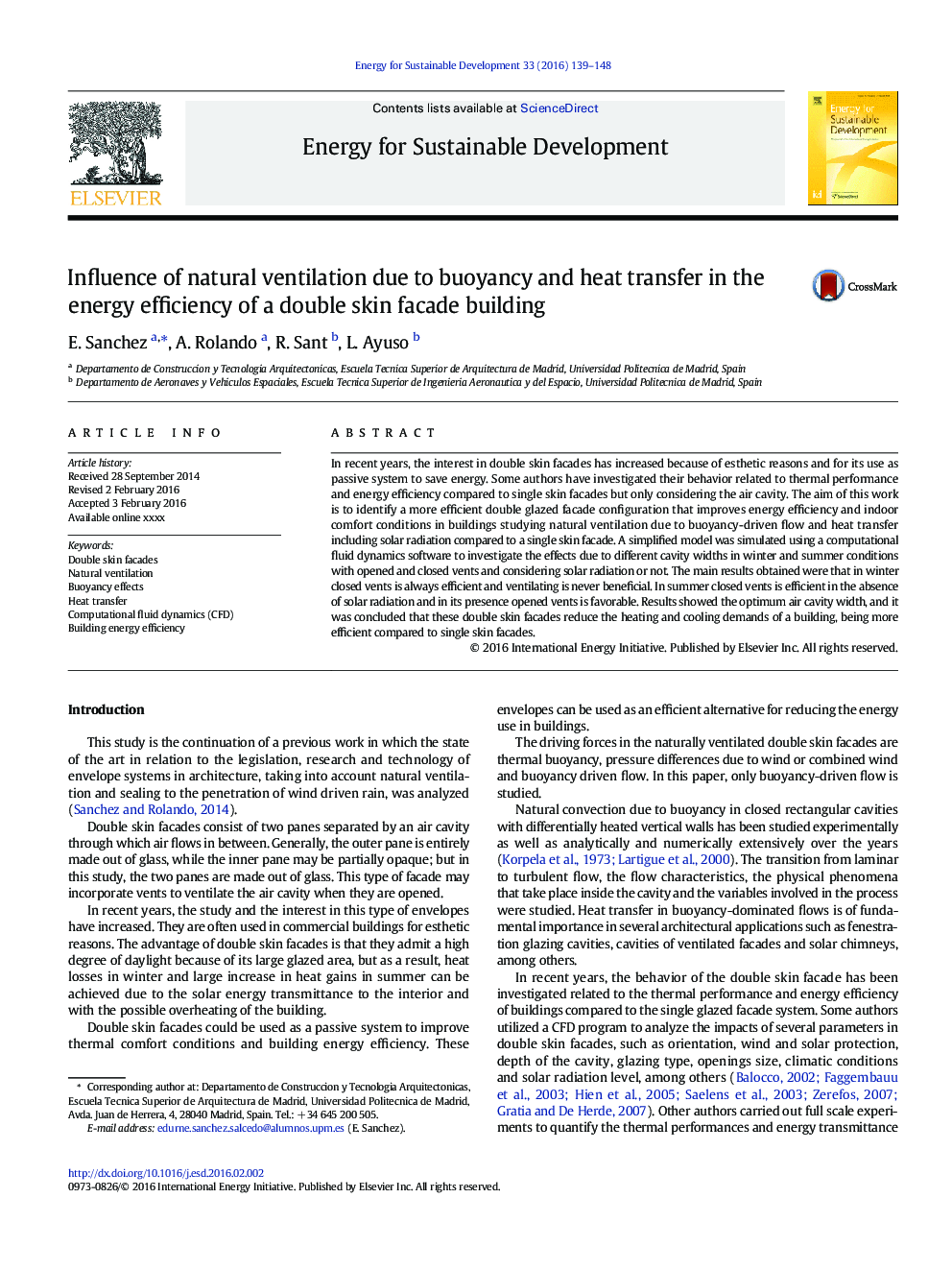| Article ID | Journal | Published Year | Pages | File Type |
|---|---|---|---|---|
| 7453812 | Energy for Sustainable Development | 2016 | 10 Pages |
Abstract
In recent years, the interest in double skin facades has increased because of esthetic reasons and for its use as passive system to save energy. Some authors have investigated their behavior related to thermal performance and energy efficiency compared to single skin facades but only considering the air cavity. The aim of this work is to identify a more efficient double glazed facade configuration that improves energy efficiency and indoor comfort conditions in buildings studying natural ventilation due to buoyancy-driven flow and heat transfer including solar radiation compared to a single skin facade. A simplified model was simulated using a computational fluid dynamics software to investigate the effects due to different cavity widths in winter and summer conditions with opened and closed vents and considering solar radiation or not. The main results obtained were that in winter closed vents is always efficient and ventilating is never beneficial. In summer closed vents is efficient in the absence of solar radiation and in its presence opened vents is favorable. Results showed the optimum air cavity width, and it was concluded that these double skin facades reduce the heating and cooling demands of a building, being more efficient compared to single skin facades.
Keywords
Related Topics
Physical Sciences and Engineering
Energy
Energy (General)
Authors
E. Sanchez, A. Rolando, R. Sant, L. Ayuso,
